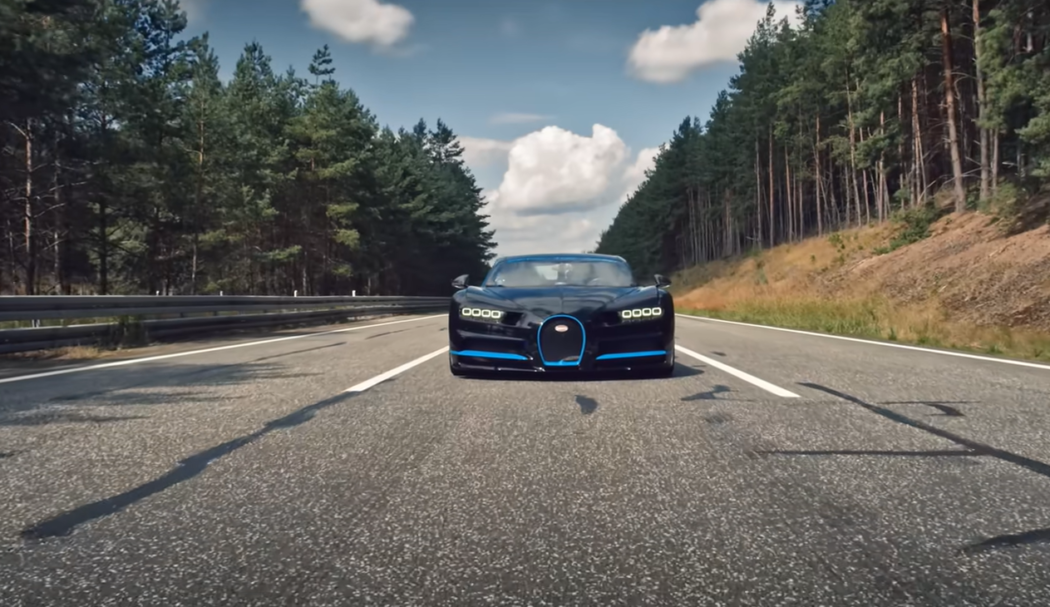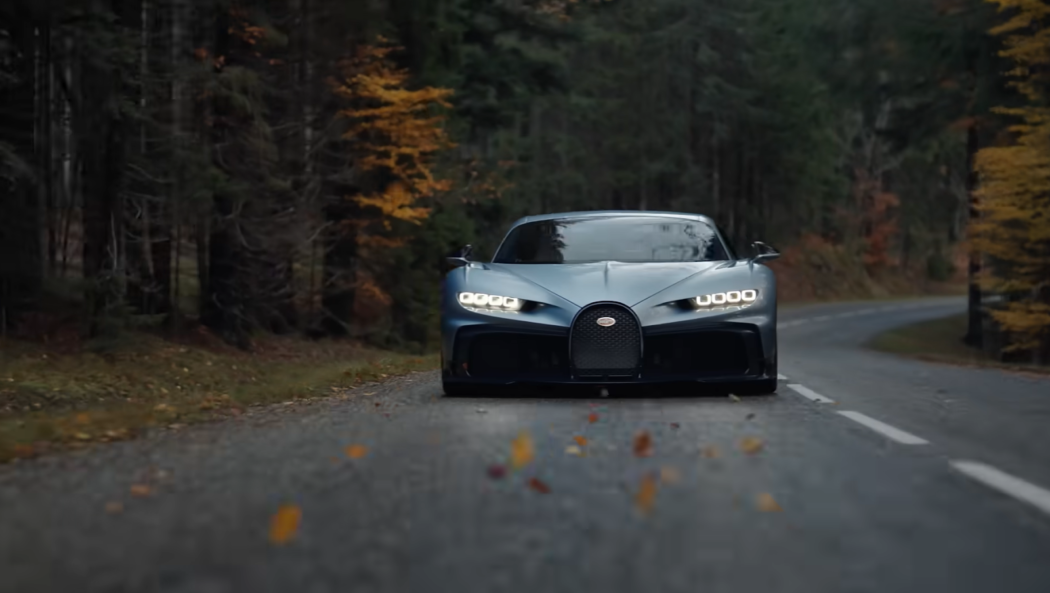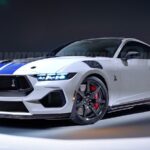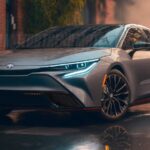For those with an interest in hypercars, the name Bugatti inevitably surfaces as a pinnacle. Within the realm of hypercars, none have surpassed the velocity of a Bugatti. The Bugatti Veyron, once reigning as the fastest production car globally, now yields that crown to the Bugatti Chiron.
The acquisition of these cars demands an astonishing outlay. Yet, what figures encompass the creation of a Bugatti?
The production of each Bugatti Veyron by the VW Group requires an expenditure of approximately $8 million. These vehicles were sold at a deficit of around $6 million per unit. Nonetheless, technological investments have led to a significant reduction in the manufacturing expense for the Bugatti Chiron. The exact value remains undetermined as of now.
A prevailing rumor alludes to Bugatti cars being sold at a substantial loss. The brand operated as a research and development testing ground for the VW Group, simultaneously bolstering the group’s reputation through the halo effect.
Despite the colossal expenses tied to its construction, available data hints at Bugatti’s profitability rather than loss.
Production Expenses: Bugatti Veyron and Bugatti Chiron
| Model | Production Expenditure |
|---|---|
| Bugatti Chiron | $2.4 Million |
| Bugatti Veyron | $7.95 Million |
When delving into the realm of production costs associated with crafting a Bugatti Veyron or Chiron, including the incredibly exclusive limited edition variants, certain expenditures can be directly attributed to specific vehicles. In contrast, other outlays are distributed across the entirety of a model’s production cycle, often extending beyond that horizon.
Determining the precise expenditure involved in the creation of a specific Bugatti model presents challenges, primarily due to the intricate accounting procedures within the VW group (formerly the owner of Bugatti). Complicating matters is the fact that the extensive research and development invested in the Veyron has served as the foundation for the design of the Chiron.
In essence, the cost entailed in producing a Chiron has been partially underwritten by the considerable time, financial resources, and dedication invested in the evolution of the Veyron.
The Cost Breakdown: Constructing a Bugatti
Bugatti’s supremacy in performance effortlessly eclipses rivals like Ferrari and Lamborghini, a prowess reflected in the equally remarkable price tags of its vehicles. While rarity plays a role in their exorbitant cost, another pivotal factor lies in the choice of materials that grace the construction of Bugatti’s automotive marvels.
Forming the foundation of a Bugatti’s structure is a costly endeavor, as both the Veyron and the Chiron showcase a monocoque chassis meticulously crafted from carbon fiber. The engines that set these automobiles apart, an intricate W-16 design composed of forged aluminum and equipped with four turbochargers, not only unleash unprecedented power but also come at a considerable manufacturing expense.
Adding to the tally are the myriad silicon microchips orchestrating the dynamic functions of these speed juggernauts. Unfortunately, the global scarcity of chips has magnified their costs exponentially. Components that once bore a modest price tag have now surged to nearly tenfold their previous value, distinctly inflating the overall cost of Bugatti production.
These materials, though emblematic of the Bugatti’s construction, are only a fraction of the expenses involved. Furthermore, the oscillation in commodity prices further complicates the determination of a precise material cost for each Bugatti.
Another direct outlay tied to Bugatti’s creation is the workforce, as these vehicles are meticulously assembled by hand. Given that technicians receive compensation on a weekly or monthly basis, quantifying the exact labor expense for a singular Bugatti remains elusive. However, leveraging data on monthly production volumes, an average labor cost per Bugatti can be estimated.

Alt: black and blue Bugatti car on the road among the trees on the both sides
Amortizing Expenses: The Construction of a Bugatti
The nucleus of hypercar construction cost centers on the innovation and development of groundbreaking technologies.
Consequently, numerous manufacturers of supercars and hypercars, including renowned names like Lamborghini and Ferrari, adopt a gradual integration of novel features across their new models. This methodical incorporation of advancements permits each fresh offering to attain profitability.
Contrarily, the Bugatti Veyron deviated from this approach. Following the acquisition of the Bugatti trademark and the Chateau St. Jean in Alsace by the VW group in 1998, an audacious endeavor unfolded—developing an unparalleled hypercar capable of outclassing rivals, ultimately resulting in the birth of the Bugatti Veyron.
The collective efforts of designers and engineers, each contributing their extraordinary expertise, came with commensurate salaries. Moreover, prototypes demanded construction and rigorous testing.
Upon crystallizing the car’s design, Bugatti’s engineers embarked on the creation of bespoke tools and molds, essential for manufacturing the vehicle, thereby incurring additional expenses. Furthermore, the acquisition of patents and other forms of intellectual property protection further augmented the financial outlay.
Once an evaluation encompasses both immediate and spread-out costs linked to crafting a Bugatti Veyron, the question inevitably arises: What is the ultimate expenditure of producing such a marvel?
The Cost of Crafting a Bugatti Veyron
- Production Cost: $7.95 Million
In 2005, the automotive arena witnessed the awe-inspiring debut of the Bugatti Veyron—a groundbreaking engineering marvel that emerged as the world’s pioneer 1000-horsepower vehicle. Over the span from 2005 to 2015, a total of 450 units materialized, commanding a price of $1.3 million each. Towards the final stretch of its production tenure, the suggested retail price (MSRP) escalated to $1.7 million.
However, the intricate web of expenses intricately woven into the design, prototyping, and testing of this revolutionary automobile inevitably translated into a situation where the VW group was vending them at a notable deficit, at least for a portion of the manufacturing period. This predicament was cushioned by a triad of factors:
- Vast Scale of the VW Group: The expansive umbrella of the VW group, encompassing entities like Audi, facilitated the substantial sales of economical vehicles such as family sedans, yielding considerable profit margins. These profits offset the losses stemming from the production and sale of the Veyron;
- Innovation Playground: The Bugatti Veyron functioned as a dynamic research and development (R&D) arena, affording engineers within the VW group the freedom to experiment with diverse innovations that could eventually elevate their core, everyday vehicles;
- Radiating Prestige: Operating as a potent emblem of the VW group’s engineering prowess, the Veyron cast a compelling spotlight on their proficiency, enhancing the prestige of their more commonplace vehicles through the impactful “halo” effect.
While the MSRP for a Bugatti Veyron stood at $1.7 million in 2013, the Berstein Group projected a manufacturing cost hovering around $7.95 million. Consequently, with this expenditure outlook, the VW group found itself absorbing a loss of approximately $6.25 million per Veyron transacted.
The Price Tag of Crafting a Bugatti Chiron
- Production Expenditure: $2.4 Million
In 2016, the Bugatti Chiron made its inaugural appearance as the successor to the iconic Veyron. It stands as a testament to the culmination of thorough research and development that characterized its predecessor. Consequently, although Bugatti has channeled an approximate $1.62 billion into the evolution of the Chiron, a significant proportion of this investment has been absorbed by the developmental journey of the Veyron.
Manifesting in various aspects as an evolution of the Veyron, the Bugatti Chiron boasts a revamped exterior and interior, an enhanced W-16 engine delivering an impressive 1500 horsepower, and an emissions enhancement that curbs the ecological impact left by its forerunner.
The orchestration of these advancements constitutes the lion’s share of the fresh expenses associated with Chiron’s creation. Most other constituents of the Bugatti Chiron remain unchanged from the blueprint of the Veyron.
Sporting an approximate price point of $3 million per unit, a predetermined production series comprising 500 vehicles, and a substantial portion of research and development expenses being allocated to the deficit-inducing Veyron, Bugatti envisions the Chiron’s imminent pivot into profitability, steering the brand toward financial success.
Bugatti’s Margins & Rimac’s Shift
In a significant development that unfolded in September of 2020, the automotive industry witnessed a strategic transition that held the potential to reshape the future landscape. Porsche, a renowned luxury car manufacturer, and the Croatian electric hypercar entity, Rimac, forged an unprecedented alliance with a shared mission – the acquisition of control over the iconic Bugatti brand from the Volkswagen Group. This audacious move marked a transformative moment, characterized by the fusion of established excellence and cutting-edge innovation.
Under the terms of this groundbreaking partnership, a new entity emerged – “Bugatti Rimac.” This joint venture saw the distribution of ownership with Porsche securing 45 percent and Rimac commanding the remaining 55 percent. The culmination of their efforts paved the way for a new era in the world of automotive excellence. The official commencement of their operational journey was earmarked for the final quarter of 2021, setting the stage for a dynamic collaboration that would redefine automotive possibilities.
The genesis of Rimac dates back to 2009 when Mate Rimac founded the company. Since its inception, Rimac has rapidly ascended the ranks, garnering recognition as a preeminent provider of cutting-edge electronic technology. This technology has not only caught the attention of automotive enthusiasts but has also captured the interest of various prominent automakers. Rimac’s influence has been instrumental in propelling innovation, particularly in the domains of battery technology and software integration. With a reputation for pushing boundaries and challenging conventions, Rimac has become a key player in shaping the future of mobility.

As the dust settled on the formation of “Bugatti Rimac,” speculation loomed regarding the trajectory that the storied Bugatti brand would undertake under this new leadership. Mate Rimac, a visionary entrepreneur, shared his ambitious vision for the future. Central to his strategy was an intention to amplify Bugatti’s profit margins, all while upholding the brand’s unparalleled performance standards. The crux of this strategic thrust revolved around the judicious reduction of production costs associated with Bugatti vehicles, thereby enhancing the economic viability of the brand without compromising on its legendary performance prowess.
The timing of this transformational collaboration couldn’t be more fitting, as the automotive industry undergoes a seismic shift from traditional internal combustion engines to the forefront of electric propulsion. Bugatti, a marque synonymous with opulence and performance, now finds itself at the precipice of an electrifying future. The partnership with Rimac, a trailblazer in the electric hypercar space, offers a lifeline for Bugatti to navigate this transition seamlessly. However, peering into the crystal ball to decipher the future manufacturing costs of forthcoming Bugatti iterations remains an intricate puzzle. The intricate interplay of cutting-edge technologies, material selection, and supply chain dynamics all contribute to the complex calculus that will determine the feasibility of Bugatti’s electrified endeavors.
In essence, the collaboration between Porsche, Rimac, and the rebirth of Bugatti as “Bugatti Rimac” signifies more than just a business transaction; it represents a fusion of tradition and innovation, a journey towards sustainability without compromise, and a resolute stride into a future where automotive excellence knows no bounds. While the roadmap ahead may be obscured by uncertainty, one thing is clear – the automotive world is bracing for an electrifying evolution.
Conclusion
Taking research and development expenditures into account, the average expense for crafting a Bugatti Veyron totals approximately $8 million. This translates to the company incurring a deficit of approximately $6 million for each car produced. Predominantly, this financial burden stems from the considerable $1.62 billion designated for research and development endeavors.
In the transition to the Bugatti Chiron, the Veyron’s successor, a substantial portion of its technology is inherited, subsequently sharing the research and development costs. Consequently, while the specific production cost for each Chiron remains undisclosed, the fact remains that Bugatti is reveling in robust profitability, notably substantiated by the $3 million price tag attached to these automobiles.











